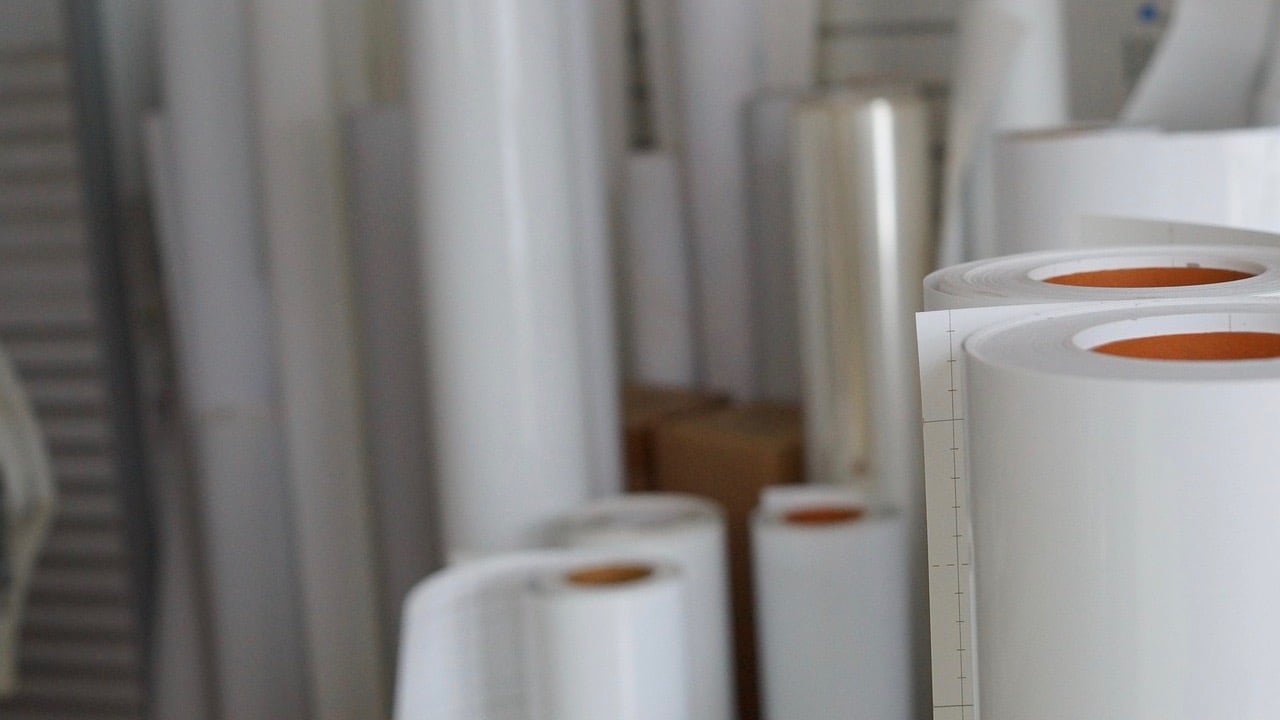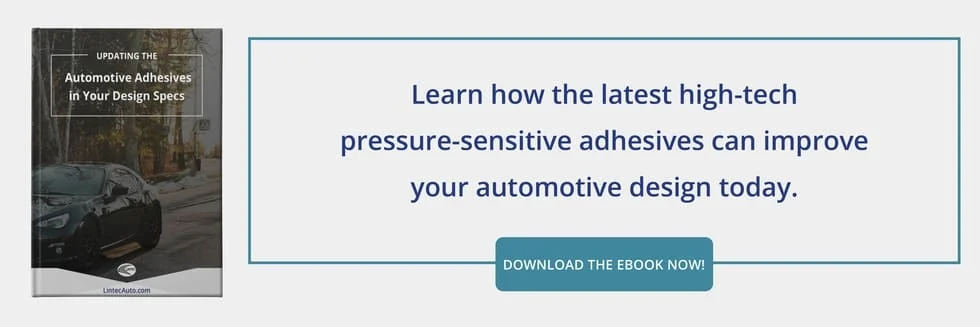Industrial Adhesives: Film Base vs. Foam Base

Films and foamstwo of the most common backings for industrial adhesiveseach have unique strengths that suit them to very different tasks and substrates. Both can be single or double-sided, pressure-sensitive or water/heat activated, and can each carry acrylic, rubber, or silicone adhesives.
However, it takes more than the right adhesive layer to create the perfect bond. To get the most out of your industrial adhesives, youve got to suit your carrier to your purpose. Heres a brief guide on how to navigate the differences, advantages, and ideal applications of film base and foam base industrial adhesives and tapes.
Film Base
Plastic films vary widely in form: they can be transparent, colored, printed with designs, matte, glossy, or even combined with materials such as paper or foil. Whether they are based on resins, polyester (like Mylar), PVC, or acrylic, these films tend to be straight-edged, thin-gauged, and well-suited for smooth surfaces or applications where translucence or invisibility is desired.
Many materials can be used in marking film, each with its advantages:
- Polyester (PET, Polyethylene terephthalate): Light and durable, ideal for thin-gauge, protective, high temperature and chemical resistant applications. Shields surfaces from abrasion. Mylar is an example.
- Polyethylene: More conformable than polyester, but still resistant to chemicals, acids, and moisture.
- Polyimide: Useful for manufacturing flexible circuit materials. It can also maintain its physical, electrical, and chemical traits in dynamic environments.
- Acrylic: Plastic or thermoplastic resin, known to have excellent clarity and stability when exposed to UV rays.
- PVC (Polyvinyl chloride): Resists wear and tear, abrasive forces, and degradation due to weathering.
- Fluoropolymer (PTFE, polytetrafluoroethylene): Valued for its low coefficient of friction, this material is used when superior chemical resistance, water repellency, and low stickiness on the non-adhesive side are desired.
Film-based industrial adhesives are often chosen to protect a bonded surface from light scratches or nicks accrued in production, packing, or installation. Films form a tough membrane over the substrate they cover and are at their best guarding against rough frictional contact or repelling liquids (water or chemicals).
Foam Base
Foams, on the other hand, make for a tape or adhesive with a thicker, opaque, more cushioned base that fills gaps, dampens vibrations, and bonds rough or irregular surfaces more reliably than film. Foams are not suited to endure frequent scratching or abrasion, but do a far better job than film of distributing the stresses of shocks and impacts across the surface of the substrate.
Here are a few of the common materials and applications for foam bases:
- Urethane: Ideal as a thermal insulator. Lacks solvent/moisture resistance (open cell). Performs poorly outdoors, yellows over time. Dampens sound and absorbs vibrations well.
- Polyethylene: Often chosen for sealing applications (closed cell). Conforms to unique surfaces and absorbs shocks, insulates, cushions, and dampens. Very economical cost.
- Vinyl: Flexible closed-cell foams, even when exposed to heat and UV radiation. Ideal for sealing out dust, wetness, and light. They are often chosen as a seal for electronic/transportation equipment.
- Acrylic: Strong adhesion, high-stress relaxation and heat resistance, highly durable, offers superior long-term resistance to extreme environments. Theyre often used in automotive exterior trim adhesion.
- Rubber: Flexible, adheres well on rough surfaces.
When your industrial adhesives need to bond textured or uneven surfaces, seal gaps, or stand up to impacts, foam is the ideal choice. Foam hugs rough surfaces and conforms to irregularities because its cells will compress around bumps or protrusions.
Film vs. Foam: Which Is Better?
Neither film nor foam are universally advantageous, so the industrial adhesives you’ll need come down to your purpose.
Films make ideal protective layers in packaging and shipping, for example, by combining excellent abrasion resistance with low-tack adhesives that peel away with minimal residue. Automotive paint protection films can invisibly shield a paint job for the life of the vehicle. Go with film if you need your industrial adhesive to be thin, transparent, printed, or function as a barrier to liquid, gas, and abrasion.
Industrial foam adhesives are at their strongest offering shock absorption and insulation for sound/temperature/light. The HVAC, window, lighting, and automotive industries often make use of foam bases for such tasks. Go with foam for bonding rough substrates, cushioning, dampening, or insulation.


